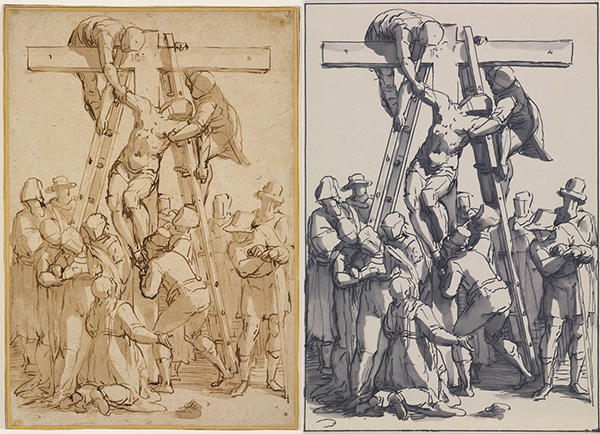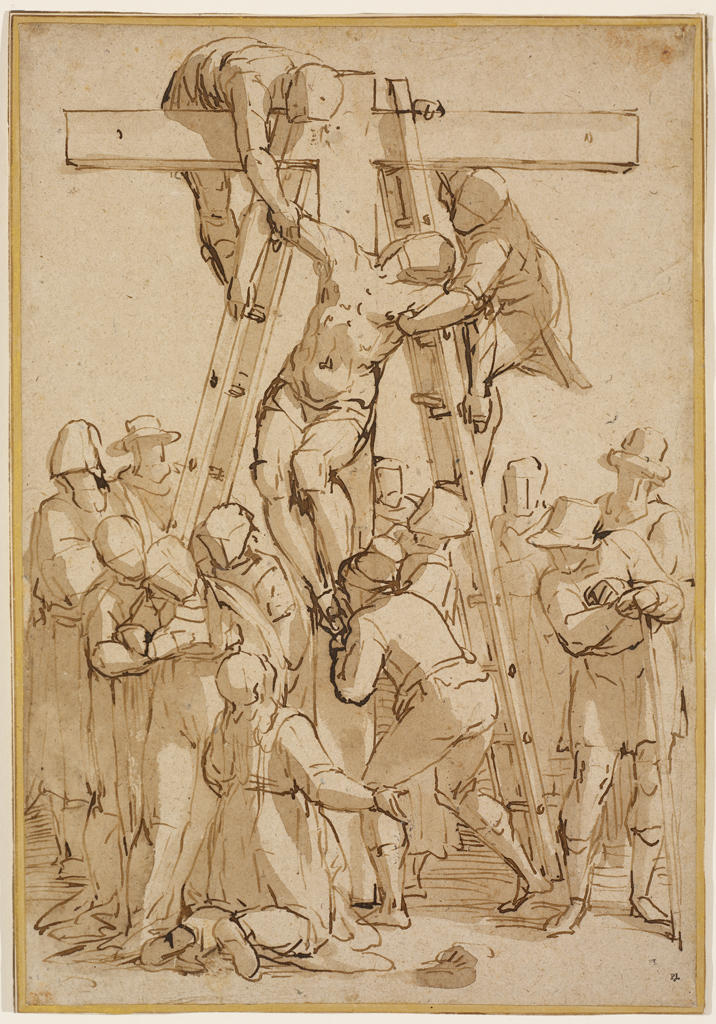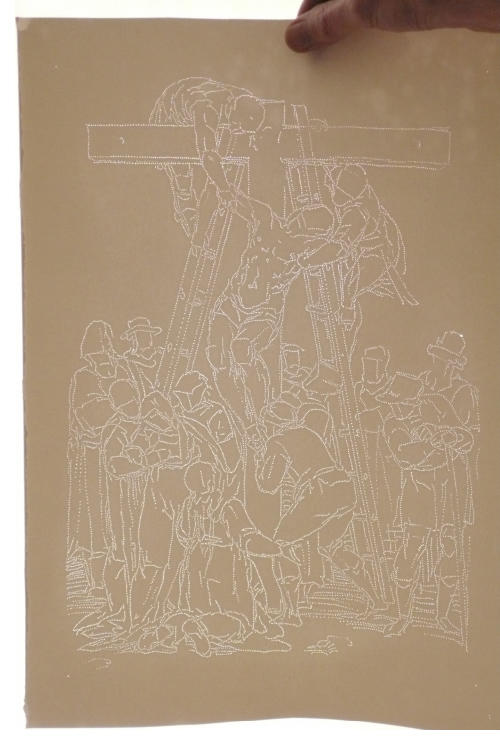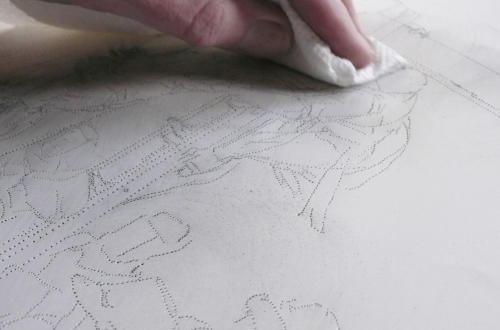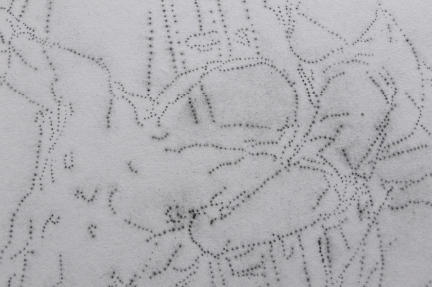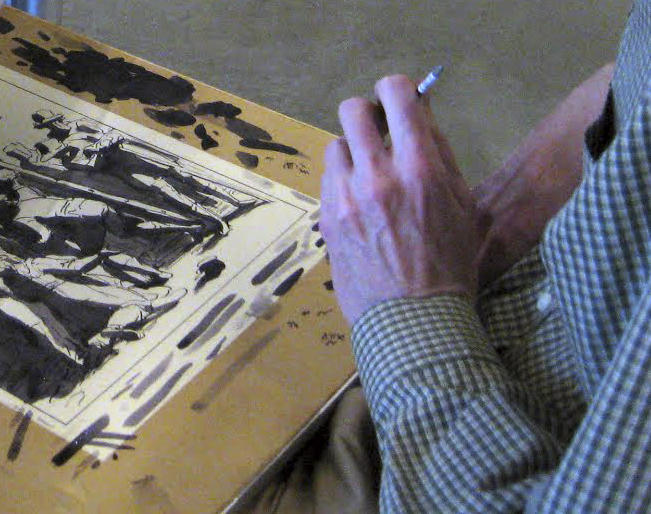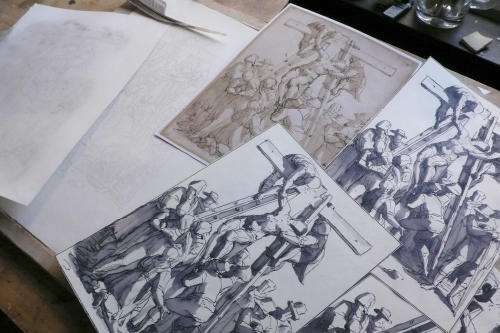In my role as the faculty fellow in the Department of Prints, Drawings, and Photographs at the RISD Museum, I aim to bring our collections to life for students, faculty, and our visitors. I help students use the collections during our open hours, work with my faculty colleagues to present exciting works of art to their classes, and help the curators enhance the educational value of the collections displayed in the galleries.
At the start of the 2012–2013 academic year, curators Jan Howard and Emily Peters asked me what special projects I had in mind for the galleries. I did have an idea about the iron gall ink used for many old master drawings. Each fall I teach a drawing class for sophomore painting majors. We focus on making drawing materials and use the museum collections as a resource. My favorite demonstration involves making iron gall ink. The students draw with this ink using quill pens they cut from goose feathers. Of all the Old Master drawings in the collection made with these materials, I find Luca Cambiaso’s Deposition from the Cross the most compelling.
Luca Cambiaso used iron gall ink and a quill pen to create his ca. 1570 drawing of the Deposition. Iron gall ink—the common writing ink in Europe for many centuries—mixes to a strong violet-black that over the course of a century changes to brown, the result of an unavoidable chemical reaction. Today we appreciate the beautiful brown shades which still convey the power of Cambiaso’s distinctive style. How might a drawing of this type have appeared when it was new? This is the question I hoped to answer.
This demonstration suggests how Cambiaso’s drawing originally looked, with black lines and gray washes. I also demonstrate a method used in the 16th century to copy drawings. Copying was important as a practice in learning to draw and as a tool for recording images for reference.
Copying is a very important way to learn about drawing. When I’m copying a work, my first concern is how to transfer the image to be copied to my drawing surface. There are many possible transfer methods, including copying by eye, tracing, stylus transfer, and squaring a drawing for transfer. For my Cambiaso copy, I chose to prick a digital print of the drawing with a needle, laying a blank sheet under the primary image to create an auxiliary transfer sheet.
The pricked sheet was taped over a blank sheet of paper and a small amount of powdered charcoal was rubbed across the surface and forced through the holes in a process called pouncing. After the pricked sheet was removed, I was able to follow the pattern of tiny dots.
Outlines were drawn first. Cambiaso’s heavy lines required a blunt quill. The quill had to be held quite upright to prevent blots. Iron gall ink dries slowly, and a line must be dry before it can be overlapped with another line without causing pooling at the point of intersection. Wet-into-wet crossings can be seen in Cambiaso’s drawing.
Working on several copies helped me to understand that Cambiaso’s drawing is carefully choreographed, despite its apparent vigor. This is clear in the calligraphic lines that articulate the torso of Jesus.
When all the lines were thoroughly dry, different values of wash were brushed over the drawing. Iron gall ink washes are quite pale at first, but they darken considerably upon exposure to light, so I had to make my dilutions much weaker than I would have expected. Iron gall ink remains water-soluble, and the initial line work was somewhat blurred by the washes. In a final step, important contours were reinforced with the pen and undiluted ink.
Cambiaso’s original drawing and a case containing the materials used in my copying process are on view in the RISD Museum European Art and Design Galleries through December 2013.
Andrew Raftery (RISD faculty, Printmaking)
Related: Visit Raftery’s Instructables posts on making iron gall ink and quill pens.
